Hager’s Fancy – The Origin of the Hager House and Hagerstown
Almost 40 years before the American Revolutionary War, when America’s founding father George Washington was only 4 years old, a young German Immigrant named Jonathan Hager, arrived on the shores of the new colonies. After thoroughly exploring Pennsylvania and Maryland, he decided to settle in Western Maryland frontier because of the similarities to his homeland Germany, such as the the beautiful views of the mountains, green valleys and peaceful rivers.
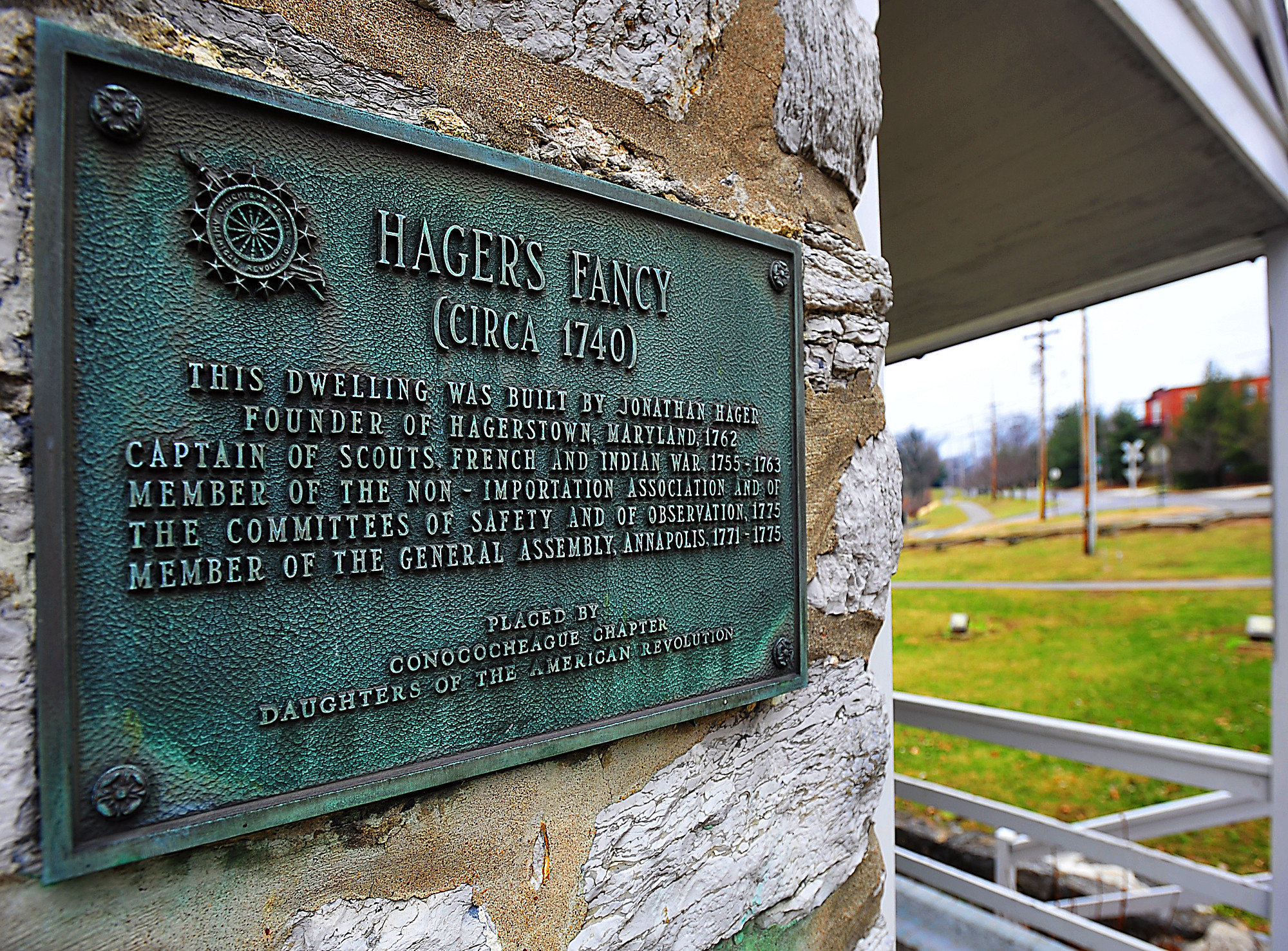
On June 5th 1739, he purchased 200 acres of land in the Great Appalachian Valley between the Blue Ridge and Allegheny Mountains in Maryland. The land included the area now known as city park and parts of what is now downtown Hagerstown. Jonathan Hager built a flagstone house on top of a fresh water stream and named the property, Hager’s Fancy. Structurally impregnable, with protected water supply, the 3 ½ story home was well defended from Indian attacks and classic example of colonial architecture.

One of two natural cold springs that run under Hager’s Fancy
Hager’s Fancy, now known as the Hager House, is constructed of solid stone walls nearly 2 feet thick which offered protection from attacks and the elements. It is built in the German style around a single chimney in the middle of the house that radiated heat throughout the building. According to the Historical Society, “the large central chimney added warmth to the stone structure, while a fill of rye straw and mud between floors and partitions served as insulation against the cruel winters”. Two cool springs under the house made the basement a pleasant retreat on hot summer days and offered access to fresh water in the early days when Indian attacks were common.
The two natural springs in the cellar assured a dependable, indoor supply of fresh water. Since the temperature of the springs is always 40 degrees Fahrenheit, they provided a convenient place to chill and preserve food. The basement area receives sunlight through splayed windows and is accessible from ground level through a Dutch door placed beneath the front porch. This door was wide enough to bring in cattle for slaughter. A room in this area with a large hearth served as the principal kitchen. The water emerging from the twin springs near the kitchen and flowing via a stone channel out of the house provided natural air-conditioning in the summer.
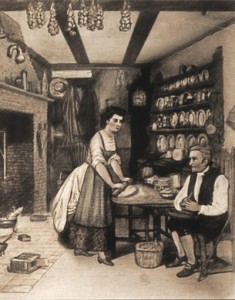
Elizabeth & Jonathan Hager in Hager’s Fancy early 1740’s.
After the house completion in 1740, Jonathan Hager then 26, starts courting a german neighbor’s 15 year old daughter, Fraulein Elisabet Kirschner (english spelling Elizabeth). The couple wed and move in to the newly completed home where they begin to farm and raise cattle. During that time, Jonathan grew prosperous. He opened a trading post and gunsmithery on the property and he continued to acquire the surrounding land.
The couple would only reside in “Hager’s Fancy” for five years when Jonathan sold house and it’s 200 aces to Jacob Rohrer, who also purchased a surrounding 300 acres of land and renamed it the Rohrer’s Addition. The Hagers moved to a property near by while creating the town now known as Hagerstown, then known as Elisabet-Stadt or Elizabeth’s Town which he named after his beloved bride.

Elizabeth Hager holds newborn son Jonathan Hager, Jr. born in 1755, while 3 year old daughter Rosanna clings to her leg. Captain Jonathan Hager cleans his musket during the French and Indian War.
As Jonathan Hager continues to move up in society; Elizabeth Hager raises their
daughter, Rosanna born in 1752 and son Jonathan Hager, Jr. born in 1755. Jonathan Hager plays a key role in the French Indian War, earning the rank of Captain of the Scouts and goes on to become the first American of German birth to occupy a seat as the Delegate to the General Assembly of the Province of Maryland; he was in fact the first naturalized citizen in that legislative body. As an American patriot, he also took a leading role in the events leading up to America’s independence, all the while creating his town which is steadily growing on land surrounding Hager House.
In 1765, after 25 years of marriage and when the Hager children are only 13 and 10 – Elizabeth Hager died at the age of 40 of a mysterious illness which caused “severe suffering”, Jonathan wrote in german on the inside of his bible, “We lived happily together until the 16th of April, 1765, then it pleased the Lord to call her, after severe suffering, out of this world.”. His love for her is evident from the fact that he named his town Elizabeth’s Town in her honor and that he never remarried after her death.
Shortly after her death, Jonathan Hager donates timber from his mill and two plots of his land next to where Elizabeth was buried. For construction of a log schoolhouse for the community, to be used as both a school and as a place for religious services. The plot on North Potomac Street is less than a mile from the Hager’s original property, Hager’s Fancy.
Later as Elizabeth’s Town grows, Jonathan Hager overseas the re-construction of Western Maryland’s first Church – the German Reformed Church, to be built in the same spot as the wooden schoolhouse. Jonathan Hager appoints as William Heyser II as the builder, mason and architect for the massive stone church. The church, now known as the Zion Reformed United Church of Christ, still stands today and is one of Maryland’s oldest that have been in continuous use as a church since its construction.
William Heyser II, the man appointed to build the German Reformed Church was a Dutch immigrant who ran the general store in town and supplemented his income through coppersmithing and building. William most likely one of few to witness Jonathan Hager’s tragic death in 1775 at the age of 61. Jonathan Hager was crushed to death by a wooden roof beam while supervising the church construction. Jonathan is buried alongside his wife in the graveyard behind the church and a stone obelisk has been erected their memory. After his death, the town of Elisabeth’s Town was renamed to Hagerstown (plural Hagers) after both of Jonathan and Elizabeth to forever commemorate their love for each other and for the town. Except for Jonathan’s untimely death, he would no doubt have played a prominent role in the struggle for American independence.
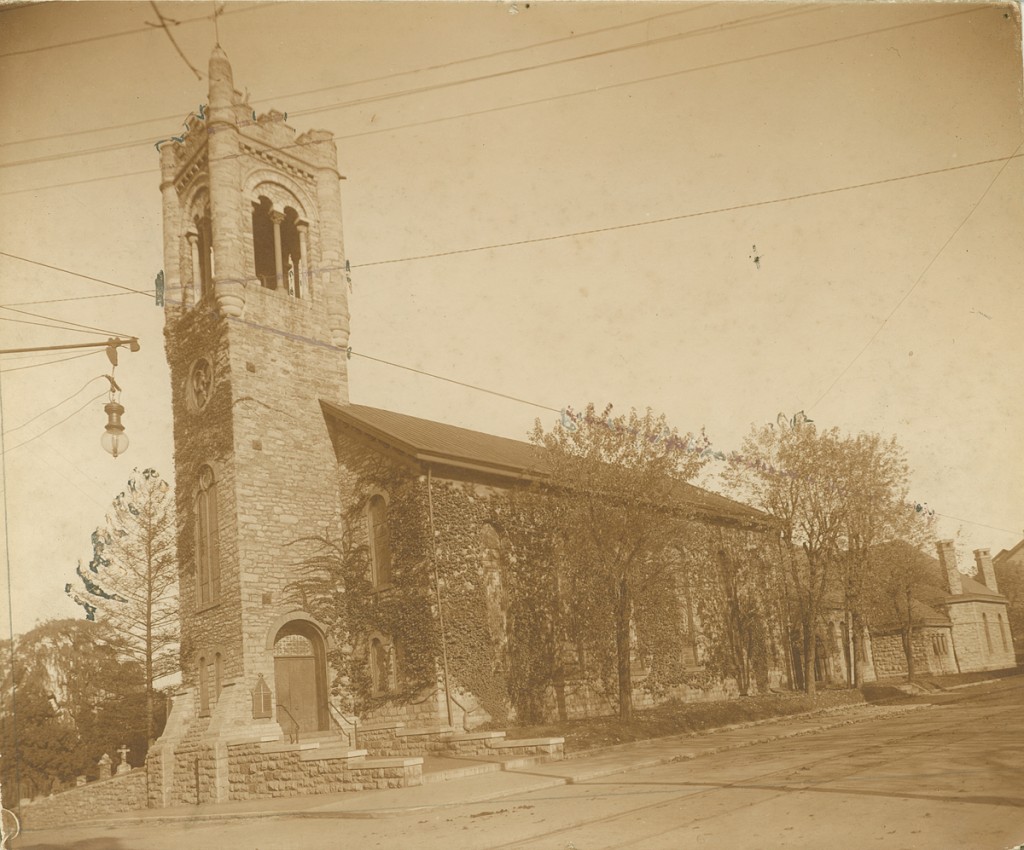
Zion Reformed Church of Christ late 1800’s.
During construction of the church, the American Revolution began and building-master, William Heyser II halted construction to organize (as their captain) a company of German volunteers and led them to support General George Washington. After being wounded at Brandywine, Captain Heyser returned to Hagerstown, to recuperate and finished the interior of the building around 1775. Meaning the church and Hager’s Fancy actually predate the founding of America.

The Hager House shown in 1903.

The basement of the Hager House during the 1950 restoration.
The Hager’s children were able to continue in their father’s patriotic tradition. Jonathan Hager, Jr., served in the Revolutionary War and Rosanna married General Daniel Heister, Jr. who was elected three times to the U.S. Congress.
Thirty-one years after Jonathan Hager’s death, Captain Heyser purchases land south of Hager’s Fancy from Jacob Rohrer’s son John for 500 pounds sterling. The park area is now known as Heyser’s Woods for the beautiful surrounding forests, streams and marshlands.

Alexander Armstrong and Susan Armstrong (Hammond)’s grave located in the Zion Reformed Church graveyard near Johnathon Hager’s Grave
Catherine Rohrer, granddaughter of John, married Michael Hammond in 1805 and the house stayed in their family for many years. Ownership of the house passed to David C. Hammond and his sister, Susan Armstrong (wife of Alexander Sr.), and then to Armstrong heirs after their death, until it eventually was sold to the city of Hagerstown.
The Hager House’s history continues as it becomes a neighbor for the Mansion House and eventually part of the park. Please continue the story with the Mansion House History in the tale of Heyser’s Woods.
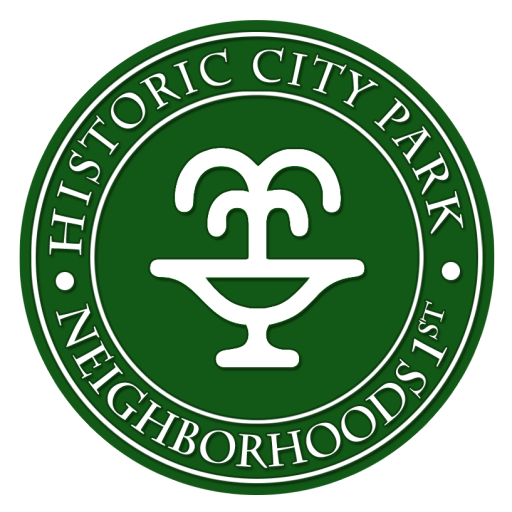
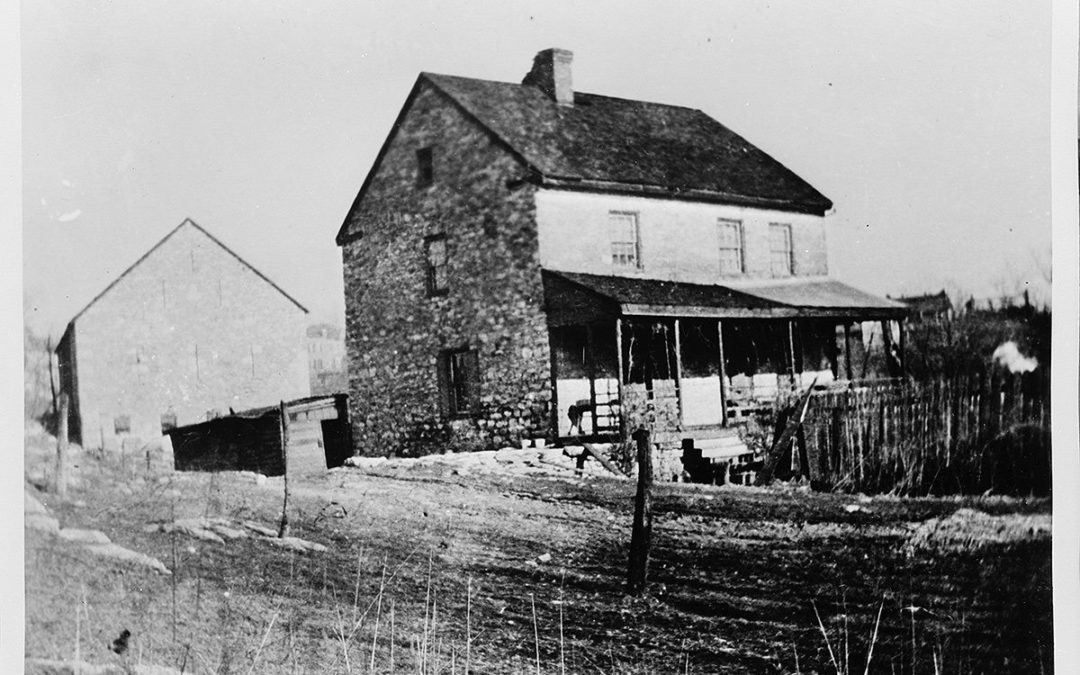
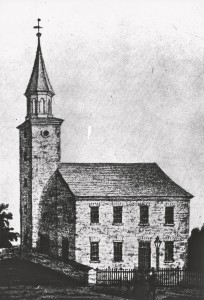
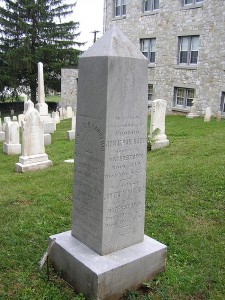
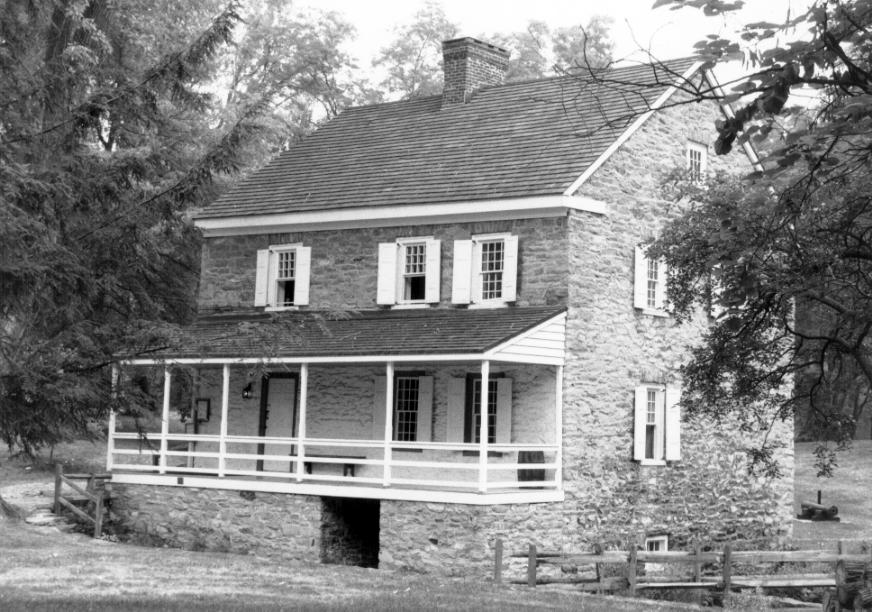
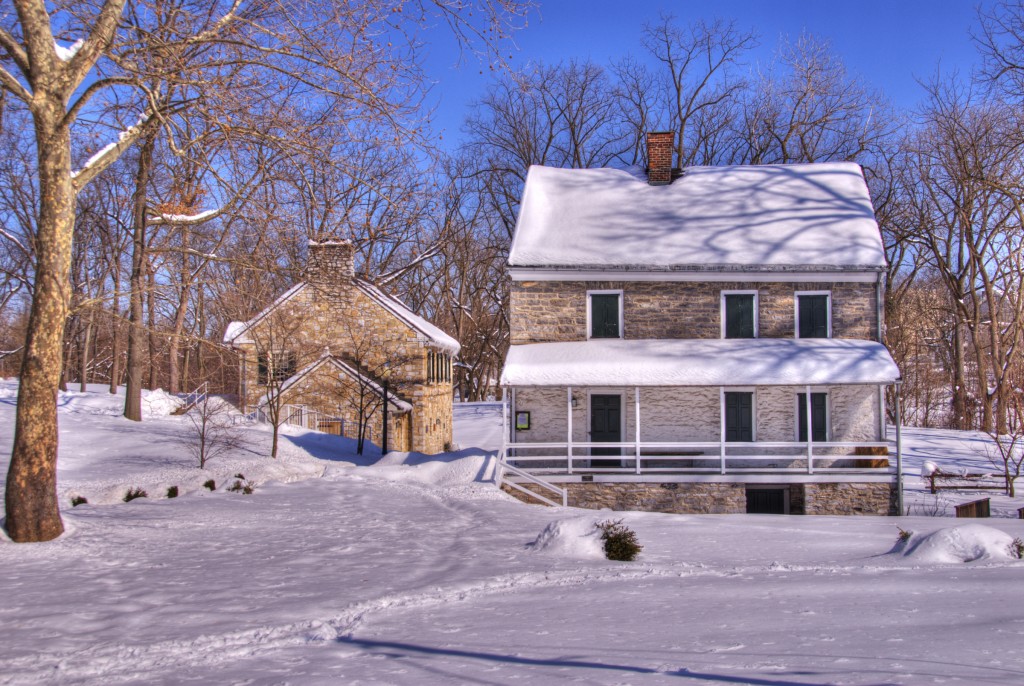
 Hagerstown City Park is known as America's 2nd most beautiful park. The first most beautiful being Central Park in New York City. The park was designed by landscape architect George Burnap who helped design some of the landscapes in Central Park.
Hagerstown City Park is known as America's 2nd most beautiful park. The first most beautiful being Central Park in New York City. The park was designed by landscape architect George Burnap who helped design some of the landscapes in Central Park.